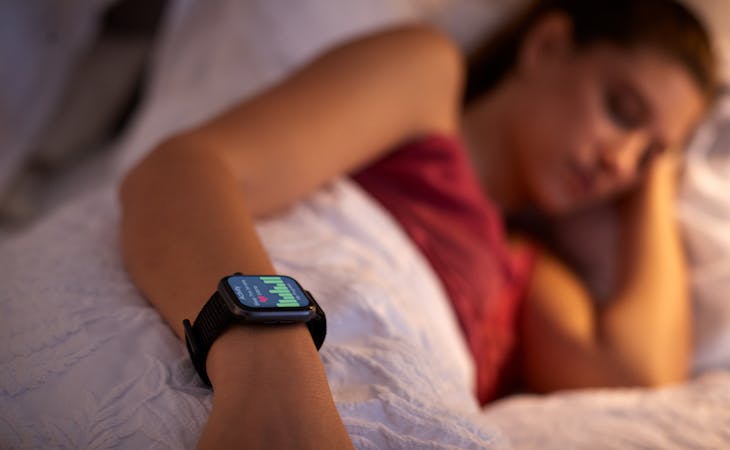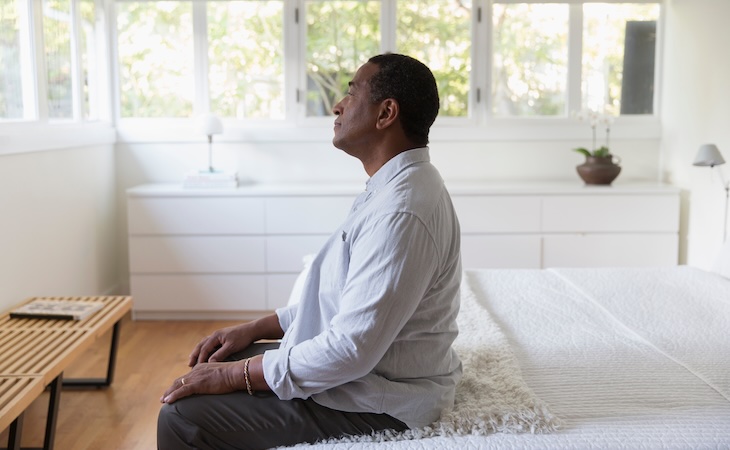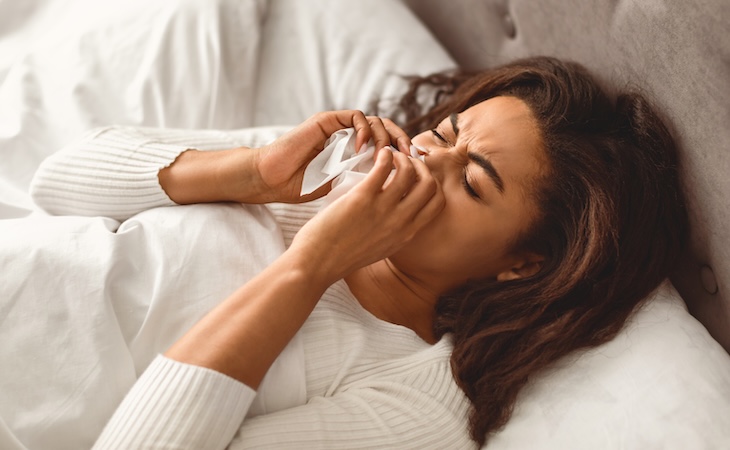Sleep tracker apps can help improve your sleep if you download one that’s right for you—and use it correctly.
Here, we break down how sleep tracker apps work, list some of the highest-rated apps, and share advice for choosing the best sleep tracker app for you.
How sleep monitor apps work
Some sleep tracker apps use your phone’s accelerometer (a tool that measures movement and vibration) to measure your sleep. In order for the app to accurately capture data, you must place the phone somewhere in your bed (ideally at the corner of your mattress near your head but not under your pillow) while you sleep.
If you don’t like having your phone that close to your head while you sleep, set it to Flight Mode. (As a bonus, you won’t be woken up by any late-night texts or alerts if you do this!)
Other sleep tracker apps use your phone’s microphone and speaker to send and receive signals of your breathing rate and body movement while you sleep.
This type of app may be able to capture snoring. Sleep tracker apps that record you snoring can help determine whether you’re merely snoring or making the gasping or choking sounds that may suggest a sleep disorder such as sleep apnea.
The information you get from a sleep tracker app is usually broken out into measurements of:
- The amount of time you actually spend asleep vs. awake;
- The quality of your sleep;
- How much time you spend in each of the sleep stages;
- The characteristics of your sleep environment, such as light and temperature;
- Health metrics that can affect your sleep, such as diet and exercise.
Related: I put 3 popular sleep apps to the test—here’s what happened
Best sleep tracker apps
Here are the pros and cons of three highly-rated sleep tracker apps to help you choose one that’s right for you.
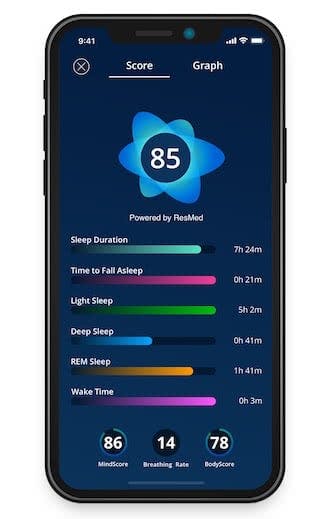
SleepScore
This sleep tracker app was chosen by Wirecutter as the best on the market. “It allows you to set sleep goals and gives actionable advice for reaching them,” writes the Wirecutter review team. “It also provides more detailed sleep-stage data than most other apps, and in our tests, its smart alarm did a pretty good job of waking us up slowly, so we felt less groggy.”
SleepScore is available on iOS and a limited number of Android devices. The free version gives you general sleep advice, your proprietary daily “sleep score,” and a record of your sleep for seven days at a time. To take advantage of additional features, like a comprehensive sleep report you can share with your doctor and personalized sleep advice, you’ll need to upgrade to the premium version, which costs $50 per year.
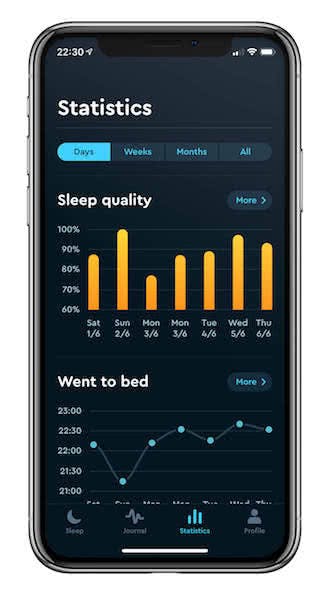
Sleep Cycle
Sleep Cycle (available on iOS and Android devices) is intuitive, and the free version offers a lot of information. It has a 4.7/5-star rating in the Apple app store, 4.4/5-star rating in the Google Play app store, and was named Wirecutter’s runner-up.
The app records sleep quality plus the average time you spent in bed. It goes into when you are in deep sleep, your lightest sleep phase, and your average wake-up time. It also collates the data so you can track your sleep patterns over time. A premium subscription to Sleep Cycle costs $29.99 per year and includes additional features, like snore detection and heart rate monitoring.
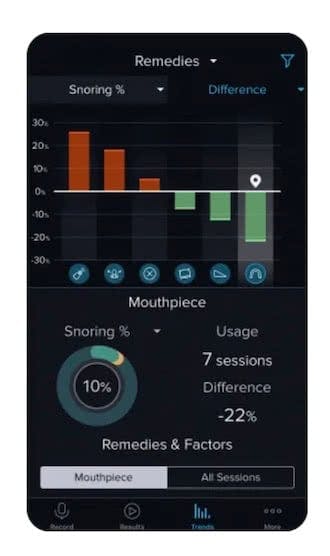
SnoreLab
This snoring management app for iOS and Android gives measurements of snoring intensity and duration. Press start, place your phone next to your bed, and you’re ready to go to dreamland. With a 4.7/5-star rating in the Apple app store and a 4.2/5-star rating in the Google Play app store, customers are pretty pleased with this app’s features.
The app compares your snoring over time and can help you evaluate whether remedies and lifestyle changes are working. While many of the basic features are free, you’ll need to upgrade to a premium subscription (which costs $11.99 per year) if you want to see your sleep stats over time or get access to soundscapes to help you sleep. (Find out whether ChatGPT can help you sleep better.)
Should you use a sleep tracker app?
Even when it seems everyone is tracking everything, from their heart rate and oxygen levels to every step they take, there are still good reasons to consider using a sleep monitor app. But it’s important to understand what they do—and don’t do.
“They don’t measure sleep directly,” says Alan Schwartz, MD, director of Johns Hopkins University’s Sleep Disorders Center at Johns Hopkins Bayview Medical Center in Baltimore, Md. “Most sleep tracking devices make some guesstimate as to how much you’re actually sleeping.”
That’s because they estimate your sleep based on how inactive you are while you are in bed. For exact data about your sleep habits, you would need a medical sleep study. A major difference between such a study vs. a sleep tracking app or device is that a study monitors brain waves to analyze the stages of sleep you’re in through the night.
Schwartz still says tracking apps and devices can be useful for helping you recognize patterns in your sleep habits. “The tracker will give you something to reflect on,” he says. It will help you detect if your sleep is interrupted overnight so you can make improvements. It will also give you insight into your sleep patterns, which may help you make choices to support healthier sleep.
Related: 8 smart bedroom gadgets that can help you sleep better
Choosing a sleep tracker for you
Apps are just one type of sleep tracker you can try to improve your shuteye. Which one you choose depends on your personal preference, budget, and what you hope to get out of using it. Here’s a rundown of popular sleep trackers.
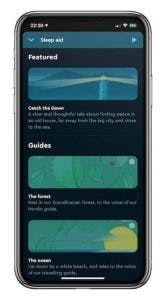
Phone app
As we’ve detailed in this article, a sleep tracker app that you download on your phone can help you understand whether you’re getting quality sleep and what you can do to improve your sleep if you’re struggling. Most are free to download, with premium features coming at an extra cost ranging anywhere from $10-$50 per year.
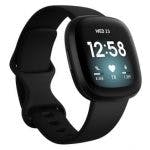
Smartwatch
A smartwatch is a type of wearable sleep tracker. It’s a device meant to be worn around your wrist that monitors your sleep, tracks your heart rate, connects with apps, and more. Smartwatches that can be used to optimize your sleep include the Fitbit Versa 3 ($199.95) and Apple Watch Series 6 ($399).
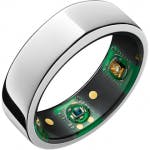
Activity ring
Activity rings are another form of wearable sleep tracker. They’re worn around your finger like a piece of jewelry to monitor your sleep and movement. The most popular one of these is the Oura ($299), a smart ring equipped with sensor technology linked to a smartphone app.
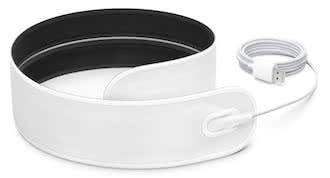
Under-mattress sensor
Non-wearable sleep trackers, as the name suggests, aren’t worn on your person. They include a thin fabric strip placed under your mattress or a cover that lies on top of it. These trackers are typically connected to an app so you can see all your sleep stats. They measure body movement, heart rate, and noise. Popular under-mattress sleep trackers include the Beddit ($149.95) and Withings Sleep Tracking Pad ($99.95).
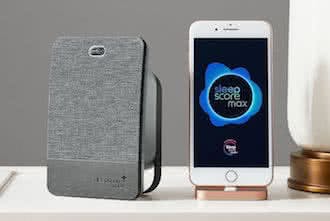
Bedside sensor
Don’t want to wear a sleep tracker or have one in your bed? Non-wearable sleep trackers also include devices that sit on your nightstand. The SleepScore Max Sleep ($149.99) is a good example of this type of tracker. It provides you with personalized sleep advice and recommends products that could help you snooze better. It also includes the premium version of SleepScore’s app for free.
Looking for more ways to improve your shuteye? Here are five expert-approved tips for prioritizing sleep year-round.

